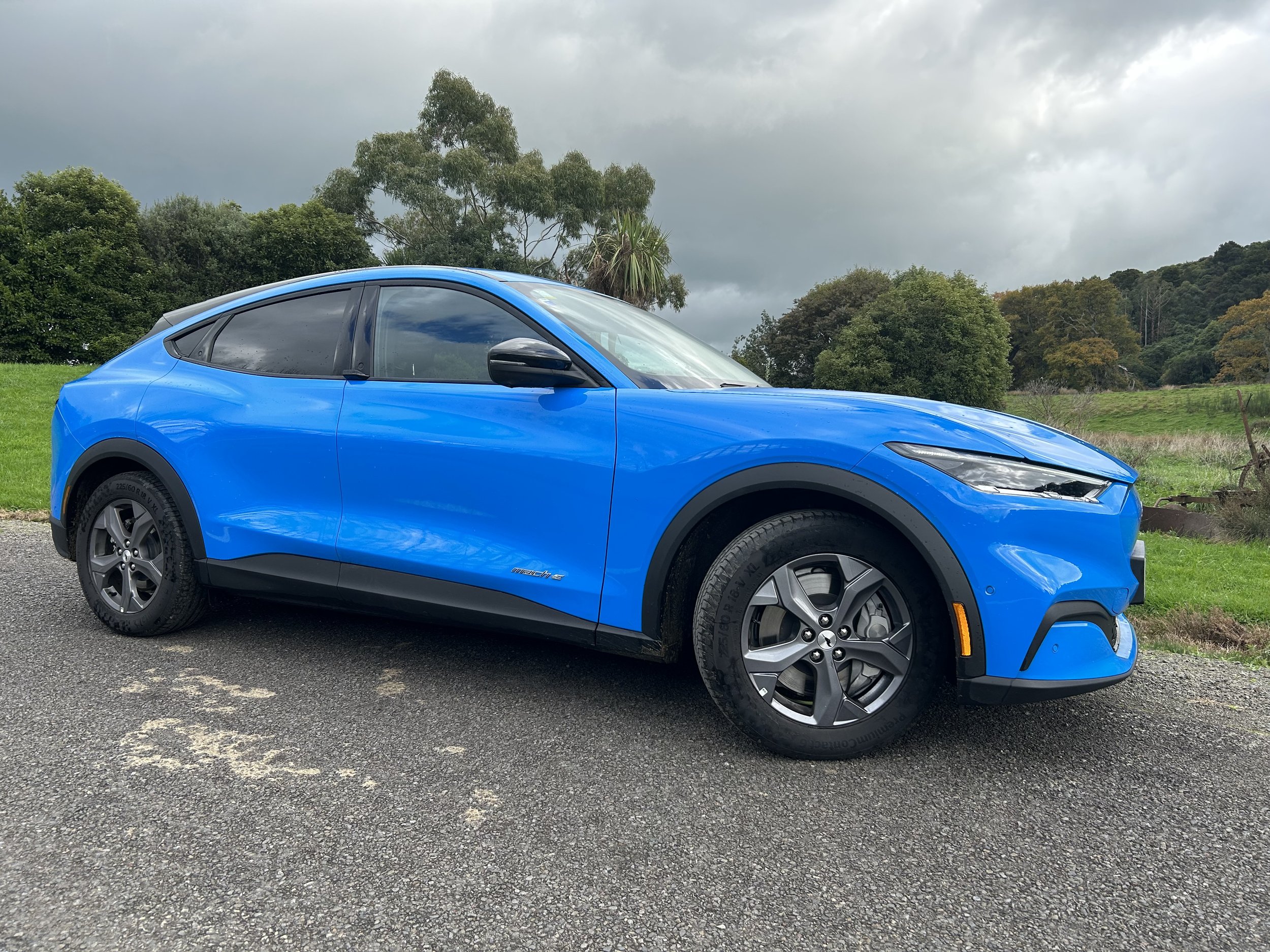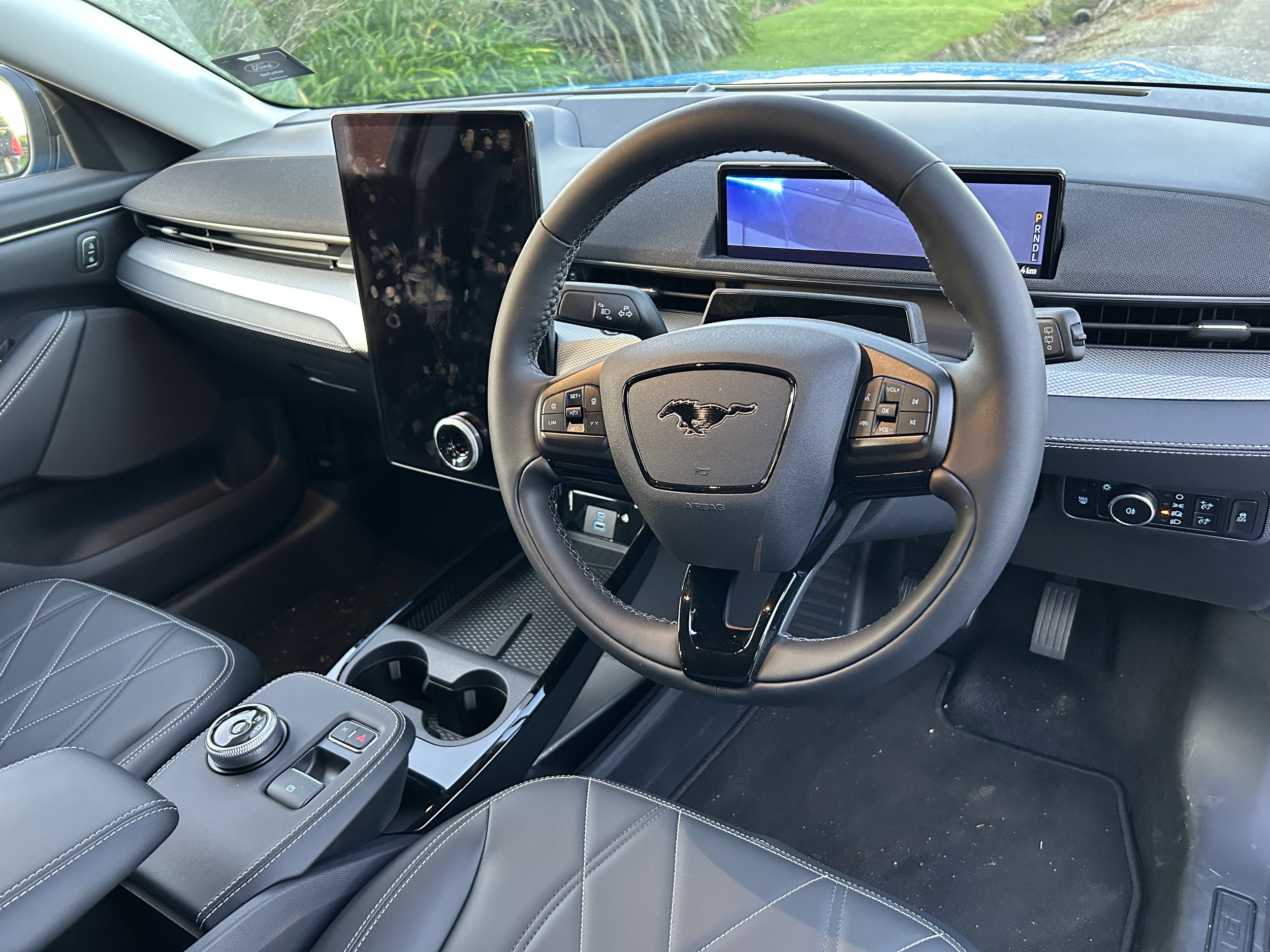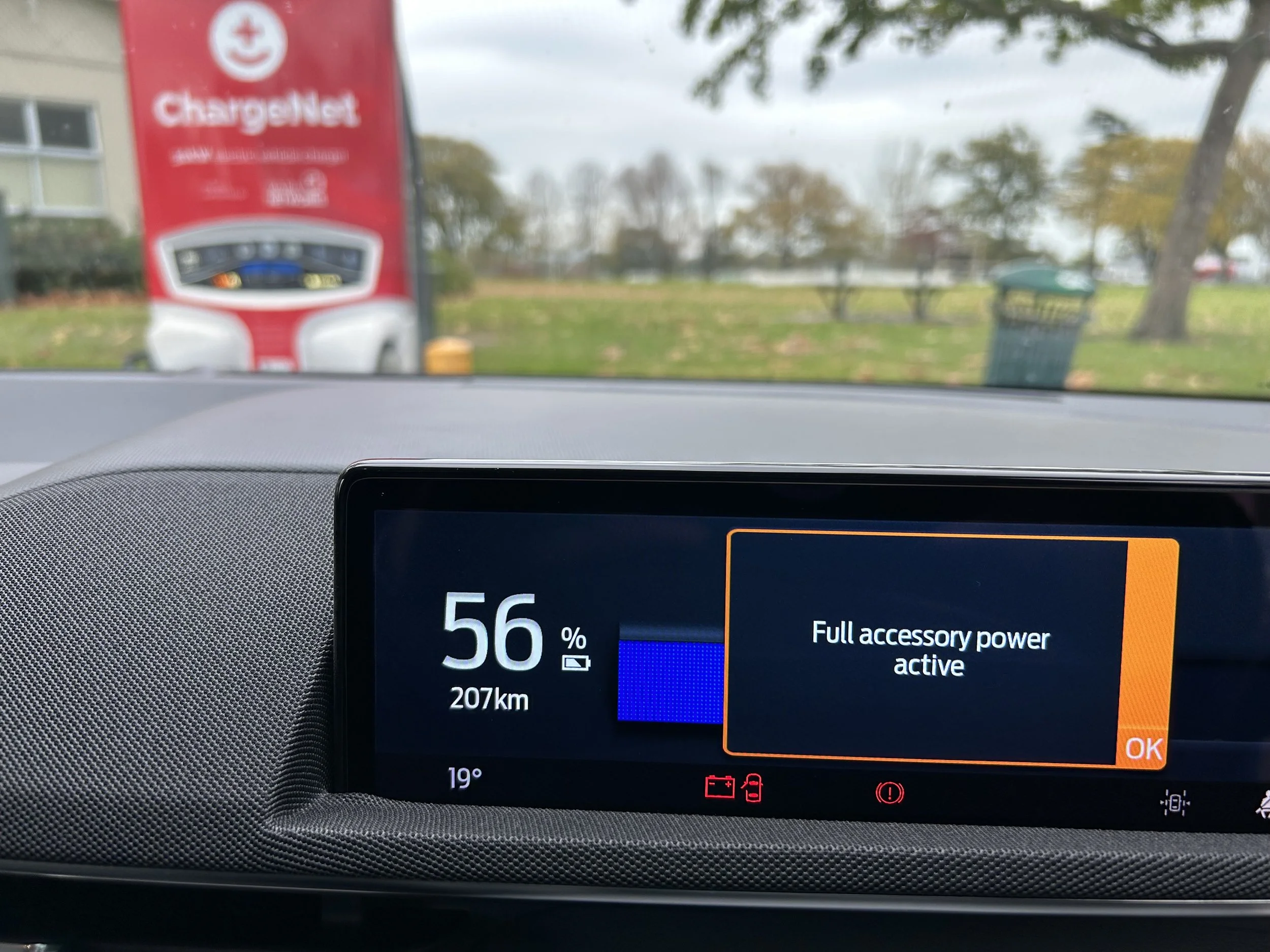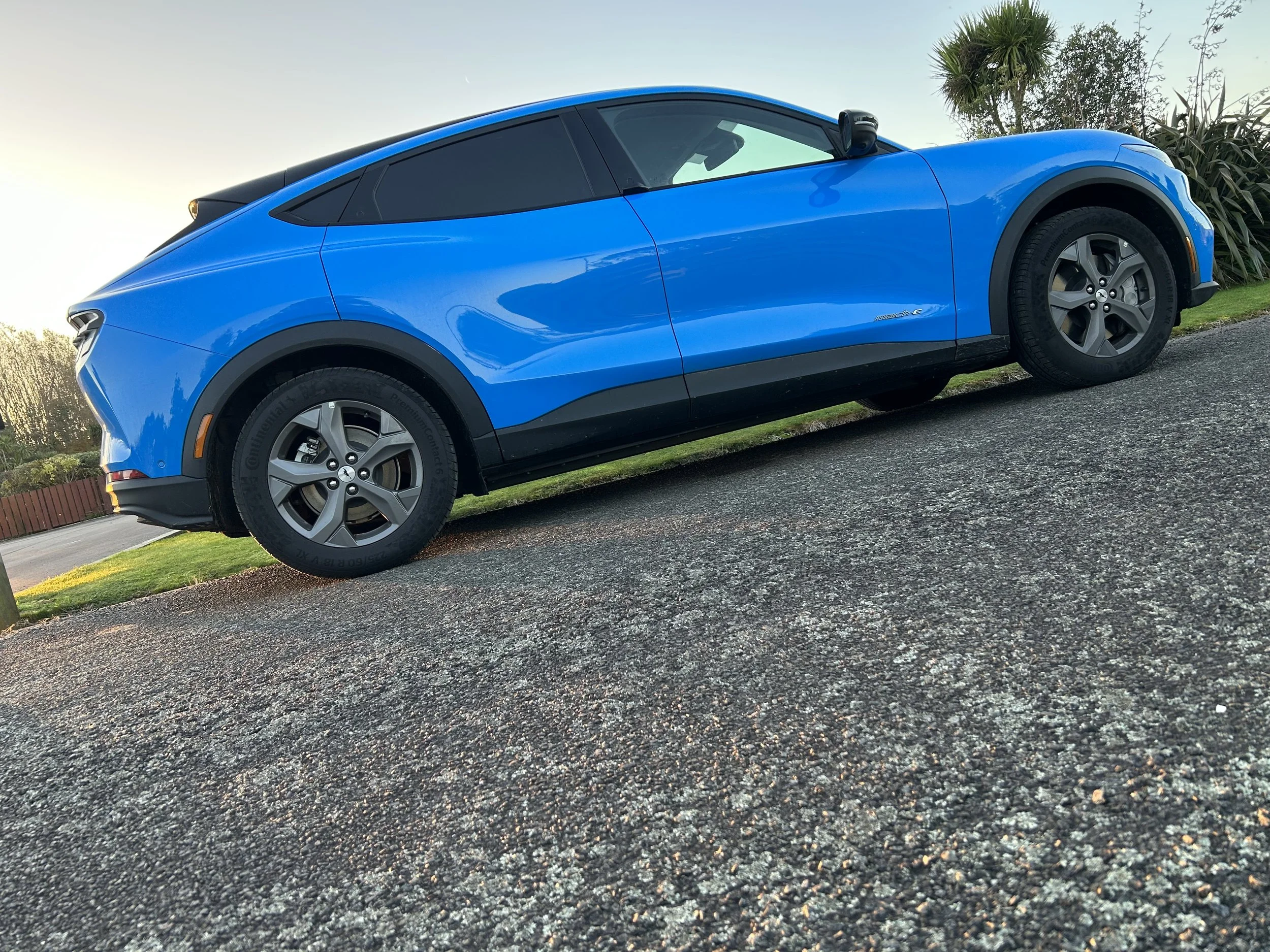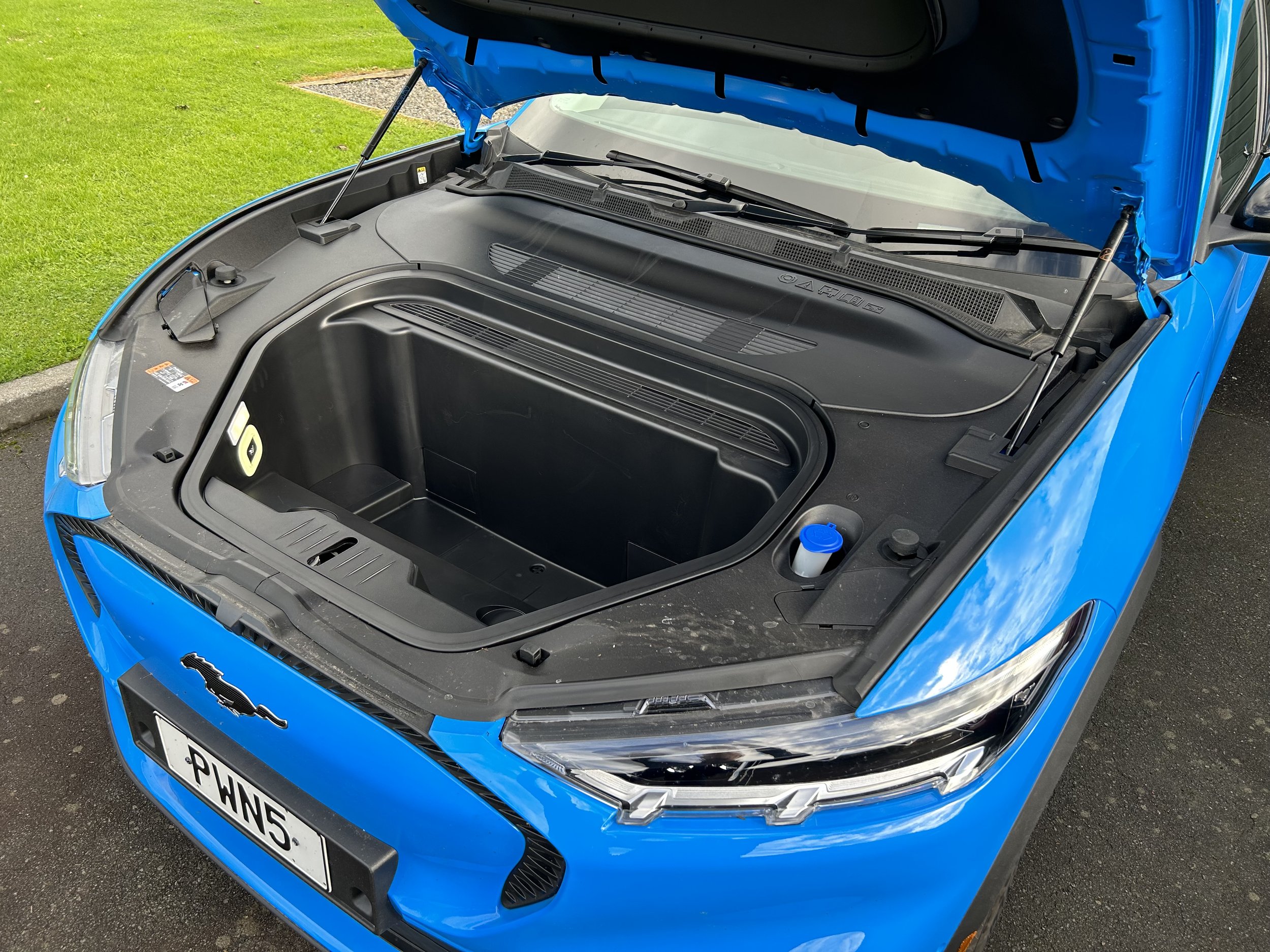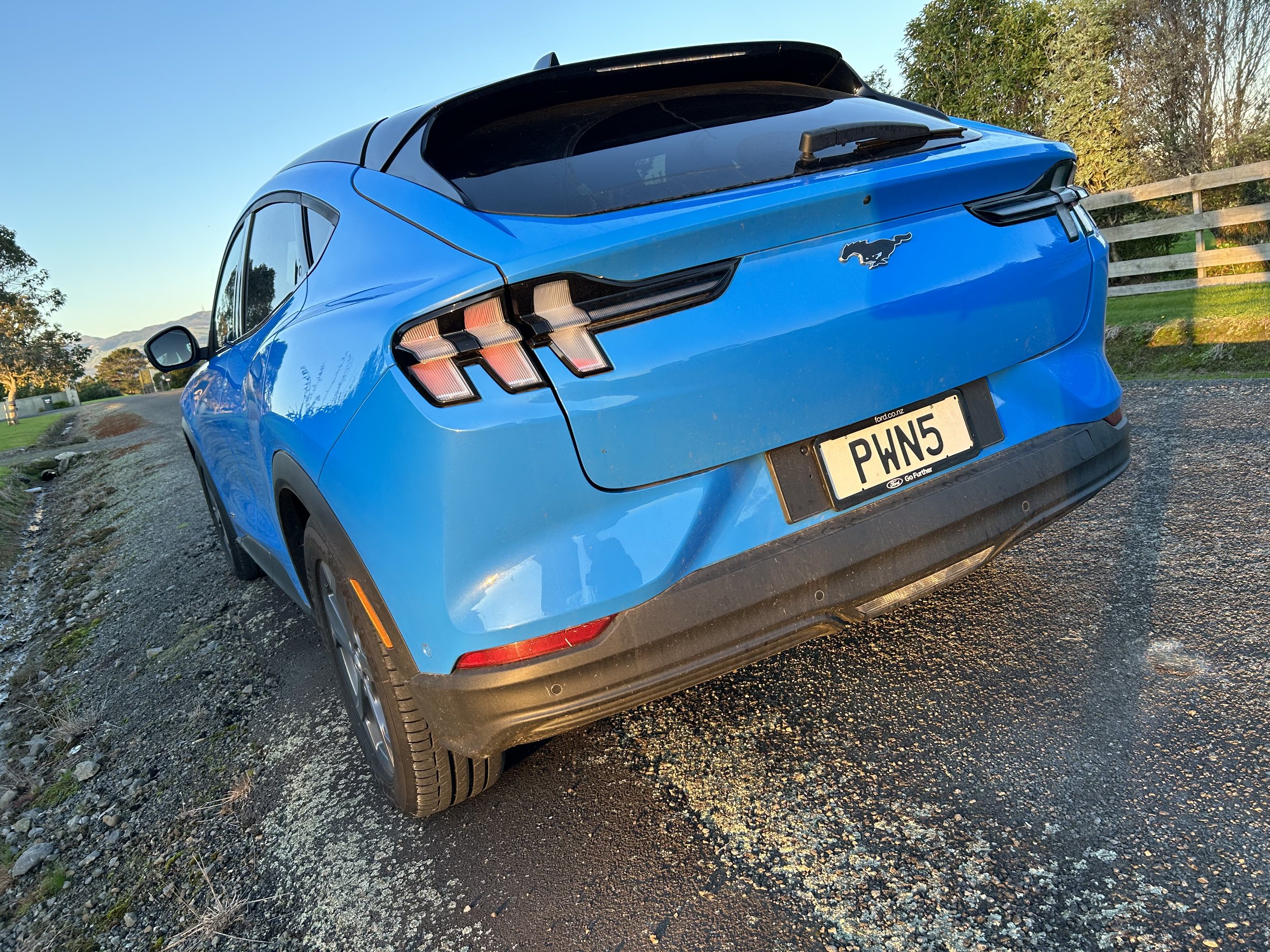Ford Mustang Mach-E RWD roadtest review: Blue chip stock
/So easy to overlook the entry model, right? In this instance, it’s best not to.
Price: $79,990
Powertrain and efficiency: 75.7kWh battery, 198kW/430Nm single motor, single speed; 440km range.
Vital statistics: 4712mm long, 1881mm wide, 1597mm high, 2984mm wheelbase; luggage capacity 402 litres (100 litre frunk); 18 inch wheels.
We like: No noise but extrovert and more characterful than many electrics; spacious SUV practicality; rear-drive presents strong value for rebate dollar.
Not so much: No home charger; not rated to tow here; looks better on bigger wheels.
DISSECTION of electric car buying trends makes for fascinating reading, not least anything revealing how deep consumers’ pockets actually are.
Hard data supports perception. For a lot of people, the buy-in buck stops short of $80,000, often $10 short. The sweet spot for a fat Clean Car Discount has pulled more than 100,000 payouts since the scheme started in 2021.
We’re going large on that cluster of choices priced to achieve a rebate of $8625 now, dropping to $7015 from July 1, and in that light, nothing stands taller or bolder as Ford’s first purely battery-wed car.
A reflection of all-American excess? Simply an unavoidable of the pony wandering into the sports utility wagon paddock? Ford adamancy Mustang in battery form needed to be especially expressive?
The latter holds water. Dearborn is on record as saying it was vital this car made people pay attention. Mustang Mach-E at base level definitely does that. It’s easily the biggest burger for those spending to this specific budget.
It does more than just deliver big on battery size and interior room. Also coming in strong is the driving experience. The shape might suggest dumpy, the at-the-wheel mannerisms are surprisingly lithe. Sure, there are sportier Mach-Es and way sportier Mustangs. Yet though it’s not set to be chosen for a Bullitt car chase scene, if you hanker for a rear-drive feel with sweet steering and a cosseting ride quality, this derivative delivers well.
Agreed, there are limits to its abilities. In respect to the total picture, when spending to achieve the rebate, you’re also trimming your expectations.
The Mach-E family spans three editions here; the two above this one have dual motors, a bigger 98.7 (91kWh usable) battery and a lot more oomph. They are more heavily kitted, more flashy, less blue collar. But they also cost $109,990 (AWD) and $124,990 (GT) respectively.
Go to the base Mustang, and even though it’s on the smallest (almost undersized) wheel set, the biggest concession is acceptance of a rear-mounted single motor and its 75kWh (70kWh usable) battery.
The budget spend set-up delivers okay output and performance-wise, with 198kW/430Nm and 0-100kmh in a decent 6.9 seconds, but it’s not fully zappy. For true wallop, the all-wheel-drives with 258kW/560 and, in GT form, 358kW/860Nm, are the stallions.
Demanding consideration is a recharging quirk; it’s among a growing count of cars that doesn’t provision with an off-a-wallplug home charging kit.
In this case it’s because Ford US can’t find one it’s happy to certify. Wallplug charging would be hugely tedious anyway, but the provision instead of a type two-to-type two cable doesn’t seem that useful, unless you’re one to haunt caravan parks. Ford has a deal with a wallbox provider, for a cost of course.
When it is replenishing from public outlets, the maximum uptake rate is a pedestrian 115kWh. In short, even when a hyper charger is involved, you might be there for a while.
Beyond that, NZ is among places where Mach-E is not signed off for towing (oddly, because it the UK it is rated for 1500kg) - it can supply a tow bar, but only to carry a bike rack - and there’s the range aspect.
Some rear-drive electrics will go further than their AWD derivatives, but the entry Mustang - regardless that it has decent-sized battery is lightest of the three variants - isn’t in that club.
Ford cites 440km from full replenishment to need to recharge; that’s 50km less than the GT and 110km below the AWD’s best.
If only. From my experience with the base car, that factory-cited figure is nowhere near an easily achievable outcome. Gut feeling is that, depending on speed, weather and road condition, come the mid-300s’, you should be on serious look-out for replenishment.
The big single drive in this test car was bringing it back from the launch event in Auckland to my home in Manawatu. The data from that was detailed in the launch report (https://www.motoringnz.com/firstdrive/2023/5/22/first-drive-ford-mustang-mach-e-pony-play-just-got-zappy).
As a quick refresher, that 482km run called for two replenishments back to 80 percent, the first in Cambridge when the car was at 56 percent and had 207kms range left (bumped back to 316km), the second two hours and 182kms on, on reaching Turangi, when the battery was down to 26 percent and had 87kms’ impetus left, according to the trip computer. I still had 187kms yet to tackle and the next part was the Desert Rd. In mist and rain. That’s when I signed up for the Z EV Charging app and settled in for a hour of email and phone catch-ups.
Conceivably, thats the main weakness when the car is cross-referenced against rivals, which will be the Hyundai Ioniq 5 and Kia EV6 (whose main advantage, straight up, is being on a 800 volt architecture), the VW MEB-platform sharing Skoda Enyaq iV and Volkswagen ID.4 (perhaps, too, the Cupra Born, though it’s smaller). Oh, yeah, and the one Ford had eyes on during Mach-E’s development.
Tesla New Zealand reporting $499.5 million in revenue at the end the 2022 financial year compared to $230.7 million in 2021 surely indicates not just CCD rebate allure but also the massive taste Kiwis have had for two related Musk machines. The Model 3 sedan primed the market but, really, it’s the Model Y that has the stronger potential. Certainly, that’s the car the Blue oval development team templated to some degree.
The end result? Hopefully fewer brand quality glitches - the test car was great for panel fit and paint, with just a tiny rattle on a door trim to blemish its solidity - and more of a fun vibe. It’s a bit Model Y in look, maybe, but has a lot more soul.
Does it feel American? You betcha. Even though, by birthright, it strictly isn’t any more so than our Teslas - those are out of Shanghai, the Mustang from Mexico - but there’s heaps to show where the DNA trail originates from.
Implementation into the body design of numerous old-world Mustang cues creates a link, but also of course an impasse, because riding the electric pony means accepting a car that is the utter antithesis of a sleek, aggro-looking generally rumbly two-door coupe.
So far into this story and only now I’m mentioning how use of the Mustang name and styling cues have proved controversial with fans of the Blue Oval. Well, it’s old news. You’ll have formed your own opinion by now on whether Mach-E ‘deserves’ the fabled badge and nameplate.
Mine? First, Ford owns the name so has every right to use it as it damn well pleases. Second, they’re not quitting the big-daddy V8 Mustang, so it’s hardly a case of one killing off the other. Third? Old-schoolers can bitch about the travesty, but in America Mach-E is proving to be a car the motoring public genuinely wants. It’s out-selling the petrol type by more than two to one. A lot of Mustang people are involving in that buy-in; the context being battery for daily drives, petrol reserved for something special.
I could see the appeal of being in that position. Sure, it’s apparent that, when describing the styling, certain words apply to the Mach-E. And certain words likely never will. Even so, as much the look as a whole runs wide of the stereotype of a ‘Stang, it’s not a poor looker, particularly in the tester’s lairy Grabber Blue.
Tesla’s influence on the interior - accessed by those weird yet functional enough door pulls - seems clear, but Ford does it better. At entry level the ambience is emphatically Ford blue collar, the cloth trim, plain hues and plastics chosen for their durability add up to a slightly unambitious visual.
What raises intrigue is that it also largely steers from anything else that’s Ford-familiar. The indicator and wiper wands are parts- bin (though, of course, US-centric) but everything else on the control and layout side is new.
The most premium-looking element is the 15-inch (so, yes, class biggest) portrait infotainment screen does a lot to make the car come across as being properly futuristic and tech-centric and might well seem daunting, but really it is incredibly logical - far more so than the Tesla one it will invariably be compared with.
The car runs the fourth-generation of Ford’s in-house Sync infotainment which works well, with the fastest wireless Apple CarPlay/Android Auto linking I’ve experienced. The screen itself is bright, clear and easy to use with crisp graphics. The only actual button is a massive silver donut-shaped dial for the volume, atop the glass.
There’s also a 10.2-inch digital instrument cluster behind the steering wheel, displaying the bare basics: speed, battery charge, the info from the driving assistance systems. As in petrol Mustangs, the speedo labels as a ‘ground speed’ device; prioritising kilometres per hour, but given mph in a smaller type as well.
As for the cabin proper? You cannot help admire the abundance of space. Electric cars are generally decent in this regard because, like this one, they have flat floors, but the Mach-E is a whopper with extra whop.
As well as being roomy, it has lots of practical touches and a generously-sized boot and frunk. The rear luggage room is accessed by a large tailgate that is a bit awkward in the base car as it lacks the hands-free electronic operability in the more expensive models.
While the all-wheel-drives are the best provisioned, the entry car has some decent stuff. Even though the front seats are wholly manual adjust and found on that long drive to be lacking in lower lumbar support, they’re heated, as is the steering wheel rim. That’s nice.
All formats of Mach-E provision a huge amount of safety kit, though the GT alone achieves 360-degree cameras to help with parking what is a pretty big car.
Even though it doesn’t ever fully mask its mass and size, it is actually pretty good as an affordable family electric for the keen driver. In delivering decent body control and very good steering feel and good grip, it’s up to providing entertaining fun.
Like most electrics, it feels quicker than the stopwatch suggests. Pin the throttle and it takes off with fairly startling urgency. Though it’s a snappy overtaker, the open road on-throttle performance is more restrained, but that’s almost a benefit, given that so much about this model’s tuning seems to be directed to it being a car in which comfort is a clear focus. To point, really, that on long drives you’ll restrain to the most eco-focussed mode, Whisper, and leave the rampaging to others.
As in typical of the type, the brake pedal takes some getting used to; it’s a bit bitey. on the other hand, the one-pedal driving mode is really well tuned. I tended to use it only in town, leaving it off for open road driving so that the car could instead free wheel whenever I was off the throttle. More economical? Hard to say, but certainly it felt satisfying.
What impresses about Mach-E is that it’s not really fresh, given it is almost four years into its production cycle. Yet, in many respects, it arrives with an air of game-changing confidence.
Improvements? Yeah, it could stand a few. It’d be nice to see it adopt faster recharging, and vehicle-to-load capability would enhance that SUV appeal. There could well be potential for both, and more. Ford has shown a willingness to explore all different types of battery technology beyond the lithium-iron phosphate type used currently. Those other potential choices span from manganese-rich batteries to solid-state.
Overall, as is, it’s an enticing proposition; easy to live with, well-built and engineered and nicely outfitted. This, and being the category’s most spacious choice for the rebate dollar, makes the rear-drive car a winning pitch.
Though still accounting for a small percentage of the national fleet, electrics are obviously on a (ahem) charge and in the current environment, those who have them will, logically, ultimately have to do better than those who don’t. Ford was once the national new car market leader; it has a much stronger battery product pathway than the brand currently occupying that spot. You’d have to think that’s got to count for something, sooner more than later.

